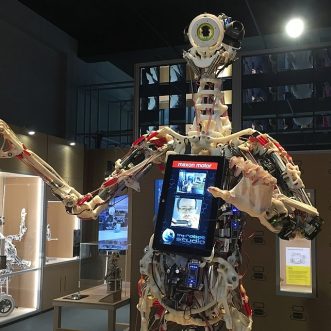
In your head, in the world
The reason you can wander around a new town centre without getting run over is that you don’t have to remember or even really know, how a town centre works. The information you need to navigate and interact with it successfully is built into its design.
Pavements tell you where you can walk. Kerbs tell you where the pavement ends. Different paving tells you which parts are pedestrianised. Black and white stripes tell you where you can cross the parts reserved for motor vehicles. Shopfronts and market stalls tell you where you can buy things. Litter bins tell you where to put rubbish.
Much of the knowledge of what a town centre is and how to use it is ‘in the world’, which means it doesn’t have to be in your head. Once you’ve encountered one town centre, you have a mental model – an enabling framework – that you can apply to the next, without having to remember every detail.
Knowledge ‘in the world’ enables us to use our experience to deal with the new and unexpected safely. When our town centre introduced ‘shared space’ – space that pedestrians and motor vehicles are meant to share nicely – they helpfully made it from patterned paving so walkers didn’t mistake it for a pedestrianised area, in black and white so that cars knew to expect pedestrians. They also added low-level signage to tell everyone this was something new.
It’s worked brilliantly.
Knowledge ‘in the world’ saves us brain space and effort.
So why do we business owners insist on trapping all the knowledge of how our business should work inside our heads?









